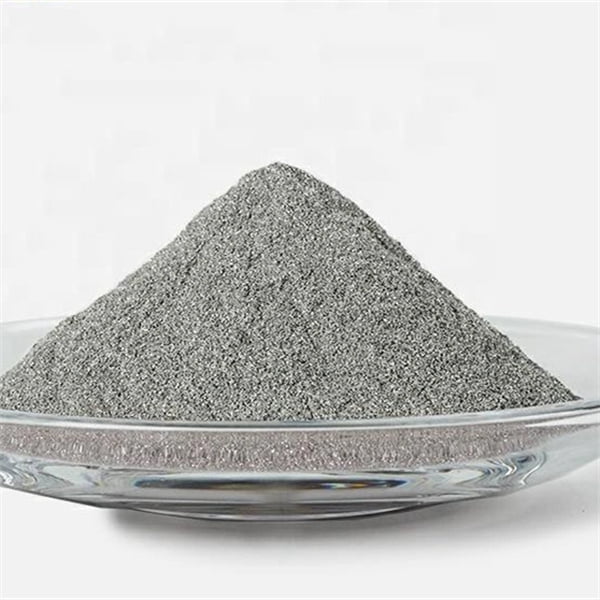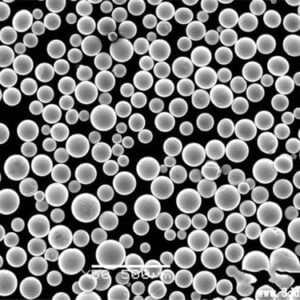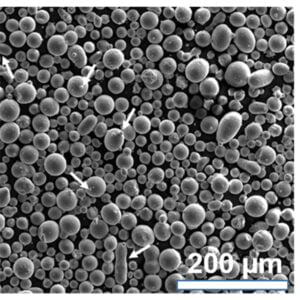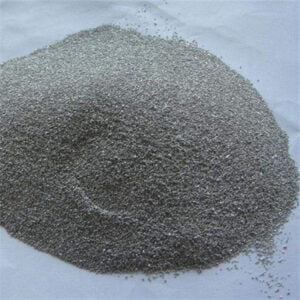17-4PH rostfritt stål Pulver
17-4PH är ett utskiljningshärdande rostfritt stålpulver som ofta används vid additiv tillverkning inom flyg- och rymdindustrin, medicinteknik, bilindustrin och allmän verkstadsindustri. Det erbjuder en utmärkt kombination av hög hållfasthet, god korrosionsbeständighet och svetsbarhet.
Låg MOQ
Tillhandahålla låg minsta orderkvantitet för att möta olika behov.
OEM & ODM
Tillhandahålla kundanpassade produkter och designtjänster för att tillgodose unika kundbehov.
Tillräckligt lager
Säkerställa snabb orderhantering och tillhandahålla tillförlitlig och effektiv service.
Kundtillfredsställelse
Tillhandahålla högkvalitativa produkter med kundnöjdhet i fokus.
dela denna produkt
Innehållsförteckning
Översikt över 17-4PH rostfritt stålpulver
17-4PH är ett utskiljningshärdande rostfritt stålpulver som ofta används vid additiv tillverkning inom flyg- och rymdindustrin, medicinteknik, bilindustrin och allmän verkstadsindustri. Det erbjuder en utmärkt kombination av hög hållfasthet, god korrosionsbeständighet och svetsbarhet.
Den här artikeln ger en detaljerad guide till 17-4PH-pulver som omfattar sammansättning, egenskaper, AM-processparametrar, applikationer, specifikationer, leverantörer, hantering, inspektion, jämförelser, för- och nackdelar och vanliga frågor. Nyckelinformation presenteras i tabeller som är lätta att referera till.
Sammansättning av 17-4PH rostfritt stålpulver
Sammansättningen av 17-4PH-pulver är:
| Element | Vikt % | Syfte |
|---|---|---|
| Järn | Balans | Huvudmatriselement |
| Krom | 15 – 17.5 | Oxideringsbeständighet |
| Koppar | 3 – 5 | Härdning genom utfällning |
| Nickel | 3 – 5 | Stabilisator av austenit |
| Niob | 0.15 – 0.45 | Hårdmetallformare |
| Mangan | 1 max | Desoxidationsmedel |
| Kisel | 1 max | Desoxidationsmedel |
| Kol | 0,07 max | Förstärkare och hårdmetallformare |
Koppar möjliggör utskiljningshärdning medan krom ger korrosionsbeständighet.
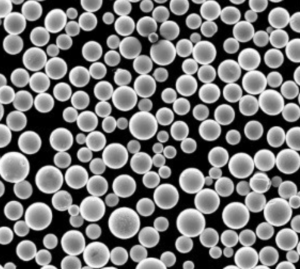
Egenskaper för 17-4PH rostfritt stålpulver
Viktiga egenskaper hos 17-4PH pulver inkluderar:
| Fastighet | Beskrivning |
|---|---|
| Hög hållfasthet | Upp till 1310 MPa draghållfasthet vid åldring |
| Hårdhet | Upp till 40 HRC i åldrat skick |
| Korrosionsbeständighet | Jämförbar med 316L rostfritt i många miljöer |
| Tålighet | Överlägsen martensitiska rostfria stål |
| Slitstyrka | Bättre än rostfritt stål i 300-serien |
| Stabilitet vid hög temperatur | Hållfastheten bibehålls upp till 300°C |
Egenskaperna gör 17-4PH lämplig för olika applikationer från flygkomponenter till formsprutningsformar.
Parametrar för AM-process för 17-4PH-pulver
Typiska parametrar för tryckning av 17-4PH-pulver är
| Parameter | Typiskt värde | Syfte |
|---|---|---|
| Höjd på lager | 20-100 μm | Balans mellan hastighet och upplösning |
| Laserkraft | 150-400 W | Tillräcklig smältning utan avdunstning |
| Skanningshastighet | 400-1000 mm/s | Densitet kontra produktionshastighet |
| Avstånd mellan luckor | 100-200 μm | Densitet och mekaniska egenskaper |
| Stödstruktur | Minimal | Enkel borttagning |
| Varm isostatisk pressning | 1120°C, 100 MPa, 3 timmar | Eliminerar porositet |
Parametrar skräddarsydda för densitet, produktionshastighet, egenskaper och behov av efterbearbetning.
Tillämpningar av 3D-tryckta 17-4PH delar
Additivt tillverkade 17-4PH-komponenter används i:
| Industri | Tillämpningar |
|---|---|
| Flyg- och rymdindustrin | Strukturella fästen, fixturer, manöverdon |
| Medicinsk | Tandimplantat, kirurgiska instrument |
| Fordon | Höghållfasta fästelement, kugghjul |
| Konsumentprodukter | Klockfodral, sportutrustning |
| Industriell | Metallverktyg för slutanvändning, jiggar, fixturer |
Fördelarna jämfört med maskinbearbetade 17-4PH-delar inkluderar komplexa geometrier, kortare ledtider och maskinbearbetningstillägg.
Specifikationer för 17-4PH pulver för AM
17-4PH pulver måste uppfylla strikta specifikationer:
| Parameter | Specifikation |
|---|---|
| Partikelstorleksintervall | 15-45 μm typiskt |
| Partikelns form | Sfärisk morfologi |
| Skenbar densitet | > 4 g/cc |
| Tappdensitet | > 6 g/cc |
| Hall flödeshastighet | > 23 sekunder för 50 g |
| Renhet | >99,9% |
| Syrehalt | <100 ppm |
Anpassade storleksfördelningar och kontrollerade fuktnivåer tillgängliga.
Leverantörer av 17-4PH rostfritt stålpulver
Välrenommerade leverantörer av 17-4PH-pulver inkluderar:
| Leverantör | Plats |
|---|---|
| Sandvik Osprey | STORBRITANNIEN |
| Snickare Tillsats | USA |
| LPW-teknik | STORBRITANNIEN |
| Erasteel | Sverige |
| Kritiska material | USA |
| Praxair | USA |
Priserna varierar från $50/kg till $120/kg baserat på renhet, storleksfördelning och ordervolymer.
Hantering och förvaring av 17-4PH-pulver
Eftersom 17-4PH är ett reaktivt material är det viktigt att 17-4PH-pulvret hanteras varsamt:
- Förvara förslutna behållare åtskilt från fukt, syror och antändningskällor
- Använd inert gas under transport och förvaring
- Jorda utrustningen för att avleda statiska laddningar
- Undvik ansamling av damm genom utsugning och ventilation
- Följ tillämpliga säkerhetsriktlinjer
Rätt teknik ger optimalt kruttillstånd.
Inspektion och testning av 17-4PH-pulver
Metoder för kvalitetstestning inkluderar:
| Metod | Testade parametrar |
|---|---|
| Analys av siktar | Fördelning av partikelstorlek |
| SEM-avbildning | Partikelns morfologi |
| EDX | Kemi och sammansättning |
| XRD | Befintliga faser |
| Pyknometri | Täthet |
| Hall flödeshastighet | Flödbarhet för pulver |
Testning enligt ASTM-standarder verifierar pulverkvalitet och batchkonsistens.
Jämförelse mellan 17-4PH och alternativa legeringspulver
17-4PH jämförs med andra legeringar som:
| Legering | Styrka | Motståndskraft mot korrosion | Kostnad | Utskriftsmöjlighet |
|---|---|---|---|---|
| 17-4PH | Utmärkt | Bra | Medium | Bra |
| 316L | Medium | Utmärkt | Medium | Utmärkt |
| IN718 | Mycket hög | Bra | Hög | Rättvist |
| CoCrMo | Medium | Rättvist | Medium | Bra |
Med sina balanserade egenskaper ersätter 17-4PH alternativ för många höghållfasta AM-applikationer som kräver korrosionsbeständighet.
För- och nackdelar med 17-4PH pulver för AM
| Proffs | Nackdelar |
|---|---|
| Högt förhållande mellan styrka och vikt | Lägre oxidationsbeständighet än austenitiska rostfria stål |
| Bra kombination av styrka och korrosionsbeständighet | Nödvändig efterbearbetning som HIP och värmebehandling |
| Lägre kostnad än exotiska legeringar | Förvaring i kontrollerad atmosfär krävs |
| Etablerade referenser inom AM | Svårt att svetsa och bearbeta |
| Egenskaper match smidesmaterial | Känslig för grop- och spaltkorrosion |
17-4PH möjliggör högpresterande tryckta delar i olika applikationer, men lämpar sig inte för extrema miljöer.
Vanliga frågor om 17-4PH-pulver
F: Vilket partikelstorleksintervall fungerar bäst för att trycka 17-4PH-legering?
S: Ett typiskt intervall är 15-45 mikrometer. Det ger optimal pulverflödbarhet i kombination med hög upplösning och täta detaljer.
F: Vilka efterbehandlingsmetoder används på 17-4PH AM-delar?
S: Varm isostatisk pressning, lösningsglödgning, åldring och maskinbearbetning används vanligtvis för att uppnå full förtätning, lindra spänningar och förbättra ytfinishen.
F: Vilken 3D-utskriftsprocess för metall är idealisk för 17-4PH-legering?
A: Selektiv lasersmältning (SLM), direkt metall lasersintring (DMLS) och elektronstrålesmältning (EBM) kan alla effektivt bearbeta 17-4PH pulver.
F: Vilka industrier använder additivt tillverkade 17-4PH-komponenter?
A: Flyg-, medicin-, fordons-, konsumentprodukt-, industriverktygs- samt olje- och gasindustrin drar nytta av 3D-tryckta 17-4PH-delar.
F: Kräver 17-4PH stödstrukturer under tryckningen?
S: Ja, minimala stöd behövs på överhäng och överbryggade sektioner för att förhindra deformation och möjliggöra enkel borttagning efter tryckning.
F: Vilka defekter kan uppstå vid utskrift av 17-4PH-pulver?
S: Potentiella defekter är sprickbildning, porositet, distorsion, ofullständig sammansmältning och ytjämnhet. De flesta kan förebyggas med optimerade parametrar.
F: Vilken hårdhet kan uppnås med 17-4PH AM-delar?
A: Lösningsglödgad 17-4PH har 25-30 HRC hårdhet medan åldring ökar den till 35-40 HRC för förbättrad slitstyrka.
F: Vilken noggrannhet och ytfinish är möjlig för 17-4PH tryckta delar?
A: Efterbearbetade 17-4PH-delar kan uppnå dimensionstoleranser och ytfinish som är jämförbara med CNC-bearbetade komponenter.
F: Vad är den viktigaste skillnaden mellan 17-4 och 17-4PH kvaliteter?
A: 17-4PH har stramare kemikontroll, lägre föroreningar och reducerat svavel för bättre duktilitet och slagegenskaper jämfört med grundläggande 17-4-kvalitet.
F: Krävs HIP för alla 17-4PH AM-applikationer?
S: Även om HIP rekommenderas är det inte säkert att det är obligatoriskt för icke-kritiska tillämpningar. I vissa fall kan det räcka med enbart värmebehandling.
Få det senaste priset
Om Met3DP
Produktkategori
HOT SALE
KONTAKTA OSS
Har du några frågor? Skicka oss meddelande nu! Vi kommer att betjäna din begäran med ett helt team efter att ha fått ditt meddelande.

Metallpulver för 3D-printing och additiv tillverkning
FÖRETAG
PRODUKT
cONTACT INFO
- Qingdao City, Shandong, Kina
- [email protected]
- [email protected]
- +86 19116340731






